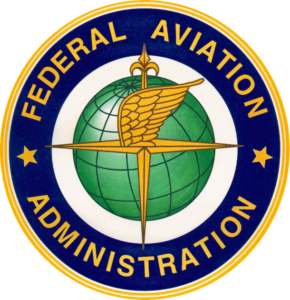After several delays, the FAA has announced the Notice of Proposed Rulemaking (NPRM) for Remote ID for drones.
Remote identification of drones, and connection of that identification with the operator of the drone, is considered a key component of an unmanned traffic management (UTM) system and enforcing drone rules. The rule has been delayed several times, due to the numerous stakeholders involved in the process and the complexity of the issue.
The proposal has not yet been published to the Federal Register: however, you may review the unpublished version at this link. The NPRM is scheduled to be published on 12/31/2019.
Broadcast or Network?
One of the discussions over Remote ID has been over whether the rule would require broadcast ID or network capabilties. The unpublished FAA proposal accommodates both:
This proposal establishes design and production requirements for two categories of remote identification: standard remote identification UAS and limited remote identification UAS. Standard remote identification UAS would be required to broadcast identification and location information directly from the unmanned aircraft and simultaneously transmit that same information to a Remote ID USS through an internet connection. Limited remote identification UAS would be required to transmit information through the internet only, with no broadcast requirements; however, the unmanned aircraft would be designed to operate no more than 400 feet from the control station.
The proposal would rely on service providers, much like the low altitude authorization and notification capability, to provide service to operators.
FAA Answers Questions
In a media call this afternoon, FAA officials answered questions about the proposal. Brandon Roberts said that the purpose of the regulation is designed to meet the needs of security agencies and lawmakers to pave the way for commercial operations near and over people, as well as flight beyond visual line of sight – but is not a response to accidents or reports of rogue drones.
Roberts says that the next steps are official publication and receipt of public comments – anticipated to close on March 2, as Roberts says that the FAA is looking to finalize the rule quickly. The rule applies to all drones over .55 pounds, and any drone sold in the U.S. would be required to comply with design and production requirements according to the rule. In answer to a question, Roberts says that while the rule would require manufacturers to make the Remote ID “tamper resistant” and built in to the drone, to prevent operators from deliberately avoiding compliance. From the unpublished NPRM:
All UAS operating in the airspace of the United States, with very few exceptions, would be subject to the requirements of this rule. All UAS operators would be required to comply regardless of whether they conduct recreational or commercial operations, except those flyingUAS that are not otherwise required to be registered under the FAA’s existing rules.
Comments from Stakeholders
Comments from stakeholders have already begun rolling in. Top drone manufacturer DJI has responded to the proposal, saying that the company will review the proposal carefully and expects to provide input over the coming weeks. DJI has long been a proponent of remote ID technologies, providing remote ID solution Aeroscope for their products.
“DJI has long advocated for a Remote Identification system that would provide safety, security and accountability for authorities,” said Brendan Schulman, DJI Vice President of Policy & Legal Affairs. “As we review the FAA’s proposal, we will be guided by the principle, recognized by the FAA’s own Aviation Rulemaking Committee in 2017, that Remote Identification will not be successful if the burdens and costs to drone operators are not minimized.”
“The widespread adoption of Remote Identification is expected to clear a path for routine use of drones in more complex and beneficial operations, such as flights over people, at night or beyond the pilot’s line of sight,” says a DJI announcement.
The NPRM will be open for public comment for 60 days after publication. The unpublished version of the NPRM suggests a 3-year time line for implementation and required compliance with the rule, which some stakeholders fear is too long: “Our main concern is the implementation period, which is needlessly up to 3 years,” says Lisa Ellman, partner at international law firm Hogan Lovells and Executive Director at the Commercial Drone Alliance. Until remote ID is implemented, the American public will be deprived of many of the vast safety, humanitarian and efficiency benefits of commercial drones. Remote ID implementation will be cheap or even free for most drone operators. We need implementation yesterday, not 3 years from now. We look forward to filing public comments with the agency and to continuing our work with the federal government to continue to integrate commercial drones into the National Airspace System.”
Miriam McNabb is the Editor-in-Chief of DRONELIFE and CEO of JobForDrones, a professional drone services marketplace, and a fascinated observer of the emerging drone industry and the regulatory environment for drones. Miriam has a degree from the University of Chicago and over 20 years of experience in high tech sales and marketing for new technologies.
Email Miriam
TWITTER:@spaldingbarker
Subscribe to DroneLife here.
https://dronelife.com/2019/12/26/breaking-news-faa-announces-proposal-remote-id-for-drones/
 Unmanned Aerial Vehicle The latest drone news
Unmanned Aerial Vehicle The latest drone news



